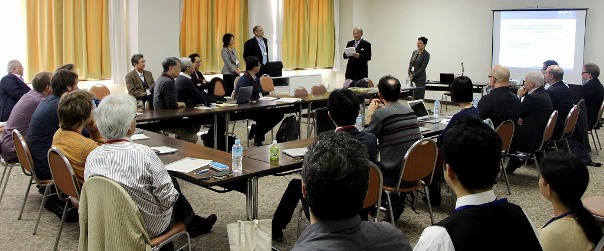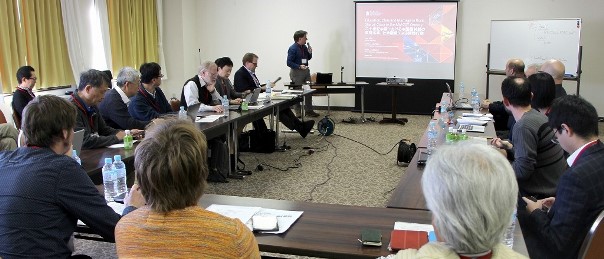IUSSP seminar on Linking Past to Present:
Long-term perspectives on micro-level demographic processesKashiwa, Japan, 9-10 December 2016
Organizing Committee: Diego Ramiro Fariñas (Spanish Council for Scientific Research), Satomi Kurosu (Reitaku University), and Martin Dribe (Lund University). The IUSSP Scientific Panel on Historical Demography and Reitaku University, in collaboration with the Population Association of Japan, organized a seminar on Linking Past to Present: Long-term perspectives on micro-level demographic processes in Reitaku University, Kashiwa, Japan on 9-10 December 2016. The seminar was held as Reitaku celebrated the 150th anniversary of its founder Dr. Chikuro Hiroike and was sponsored by Reitaku University and MEXT-Supported Program for the Strategic Research Foundation at Private Universities (2015-2019). 
Current population trends are shaped by a long history of social, economic and demographic interactions. Recent advances in data and methods have enabled demographic responses to changing economic and social conditions to be differentiated by community context, household composition, and individual socioeconomic and demographic characteristics in a detailed comparative context. A prime example of such differentiated and contextualized analyses of demographic behavior in the past is the Eurasia Project on Population and Family History. It is however also applicable to a number of other recently constructed historical datasets based on household registers, family reconstitutions, genealogies, and other sources, as well as to the increasing number of contemporary datasets generated by panel surveys and administrative registers. However, most research so far has dealt either with contemporary issues or exclusively with the past. Around the world there are a number of new efforts to bridge past and present populations using data spanning long periods or by creating longitudinal datasets from synthetic cohorts. This way of linking the past to the present represents a unique opportunity for historical demography to contribute significantly to our understanding of current population problems. The aim of this seminar was to bring together research taking a long-term perspective on important population issues, with a particular focus on closing the data gap between historical and contemporary demography. Eighteen papers were presented over two intensive days. The seminar was attended by 45 participants. In addition to the authors, participants from several universities and academic institutes both inside and outside Japan attended the meeting as observers or as session chairs. The meeting provided a good opportunity for exchange between Japanese and other Asian scholars and European and US scholars. The papers presented dealt with a range of different contexts and time periods, covering historical and contemporary Japan, China, Sweden, Belgium, Italy, Spain, sub-Saharan Africa, and the United States. They studied a range of different population problems in a long-term historical perspective, such as marriage, divorce, coresidence, household and kin dynamics, social and geographic mobility, mortality and fertility. The presentations and discussion focused on issues of comparability when studying population issues over such long time periods. Changed societal contexts have huge implications for social stratification and institutional settings, which pose challenges to long-term historical analysis. Similarly, changed meaning and definitions of data and core variables must be given serious consideration before drawing firm conclusions on changing patterns of demographic interactions. This pertains to such core demographic processes as marriage and divorce, as well as social mobility and socioeconomic differentials in demographic outcomes. 
Taken together, both the presentations and the discussions at the meeting showed the considerable progress this field has made over the past ten years when the idea of closing the gap was first presented and the first meetings were organized. Much of this progress relates to major investments in data infrastructure all over the world. At the seminar several presentations were made based on the pioneering work of the Lee-Campbell group in Hong Kong, involving massive data digitization and data dissemination of historical and contemporary Chinese demographic and socioeconomic data. Other presentations used the unique Japanese historical data (maintained at Reitaku) linked to contemporary surveys, the Swedish population and socioeconomic registers spanning the whole period from the 1700s until today for selected areas (SEDD at Lund University and POPLINK at Umeå University), and the full-count U.S. censuses developed and released by the IPUMS project at the Minnesota Population Center. Scholars representing all these infrastructures were present at the meeting. In addition to these core data, other papers were based on contemporary census data or surveys aiming to extend analyses further back in time than have previously been the case. As a whole the two-day meeting clearly demonstrated both the great advances made and the challenges posed. It showcased the contributions already made to our knowledge of contemporary population patterns by this kind of detailed historical analysis, and also pointed in several directions of future scientific contributions. Read also: |